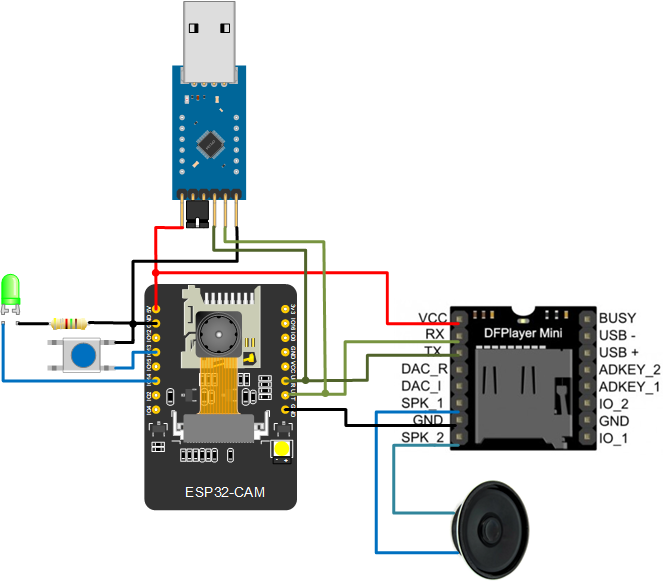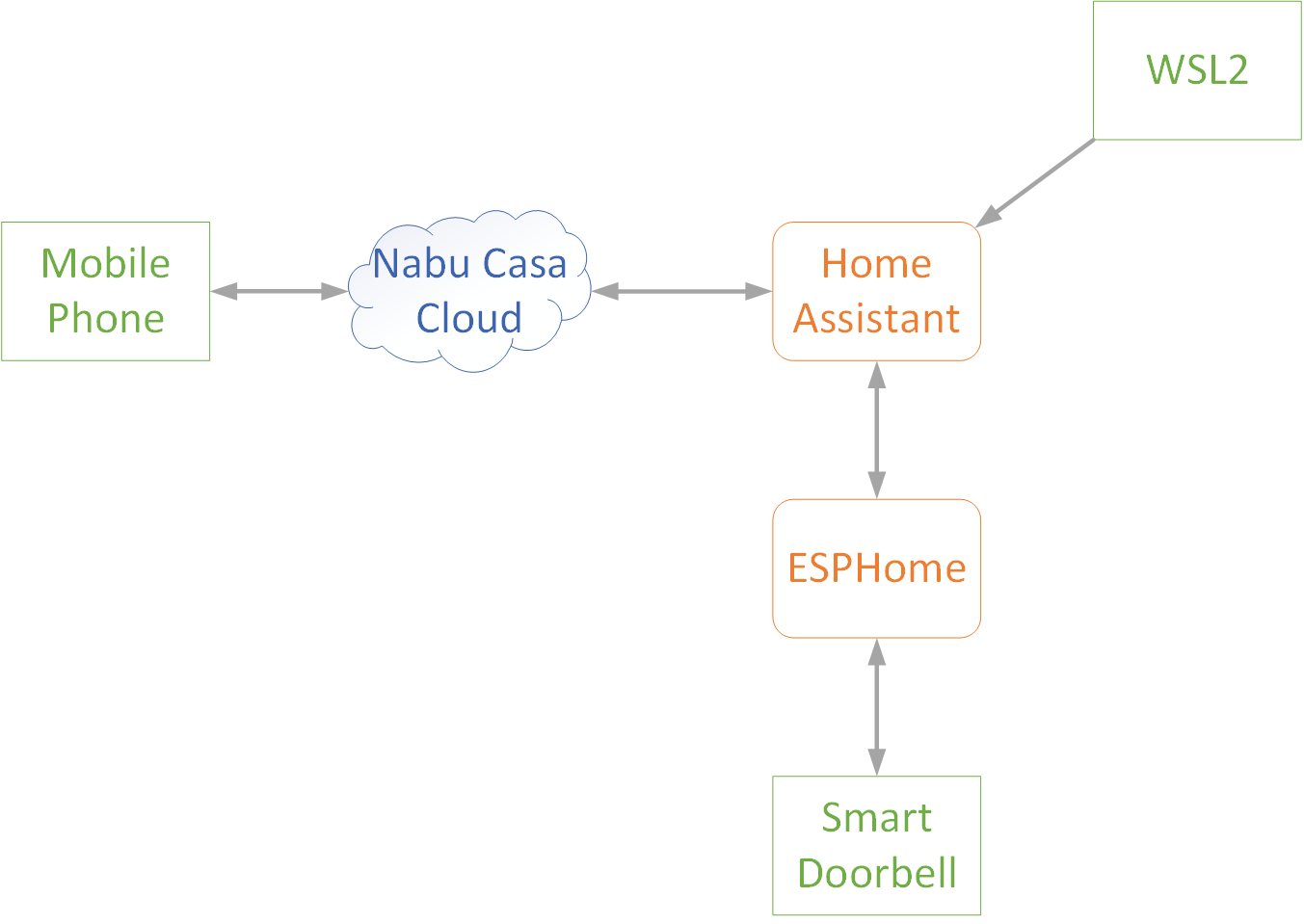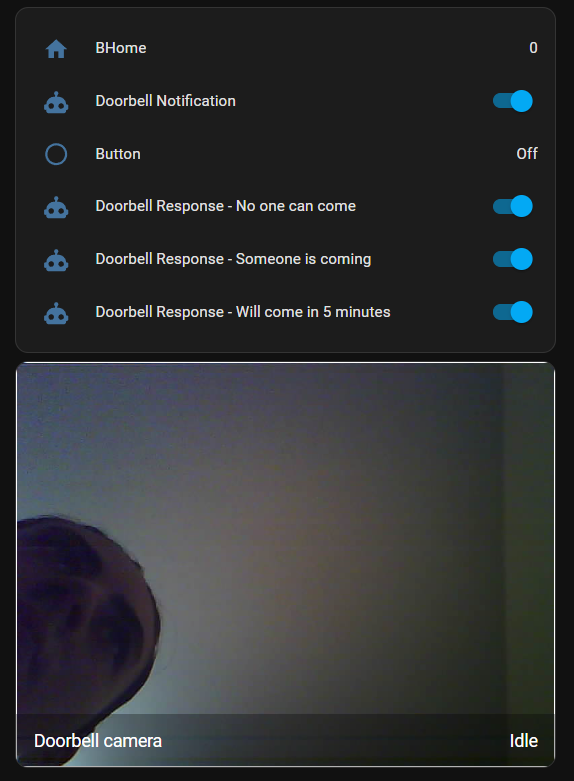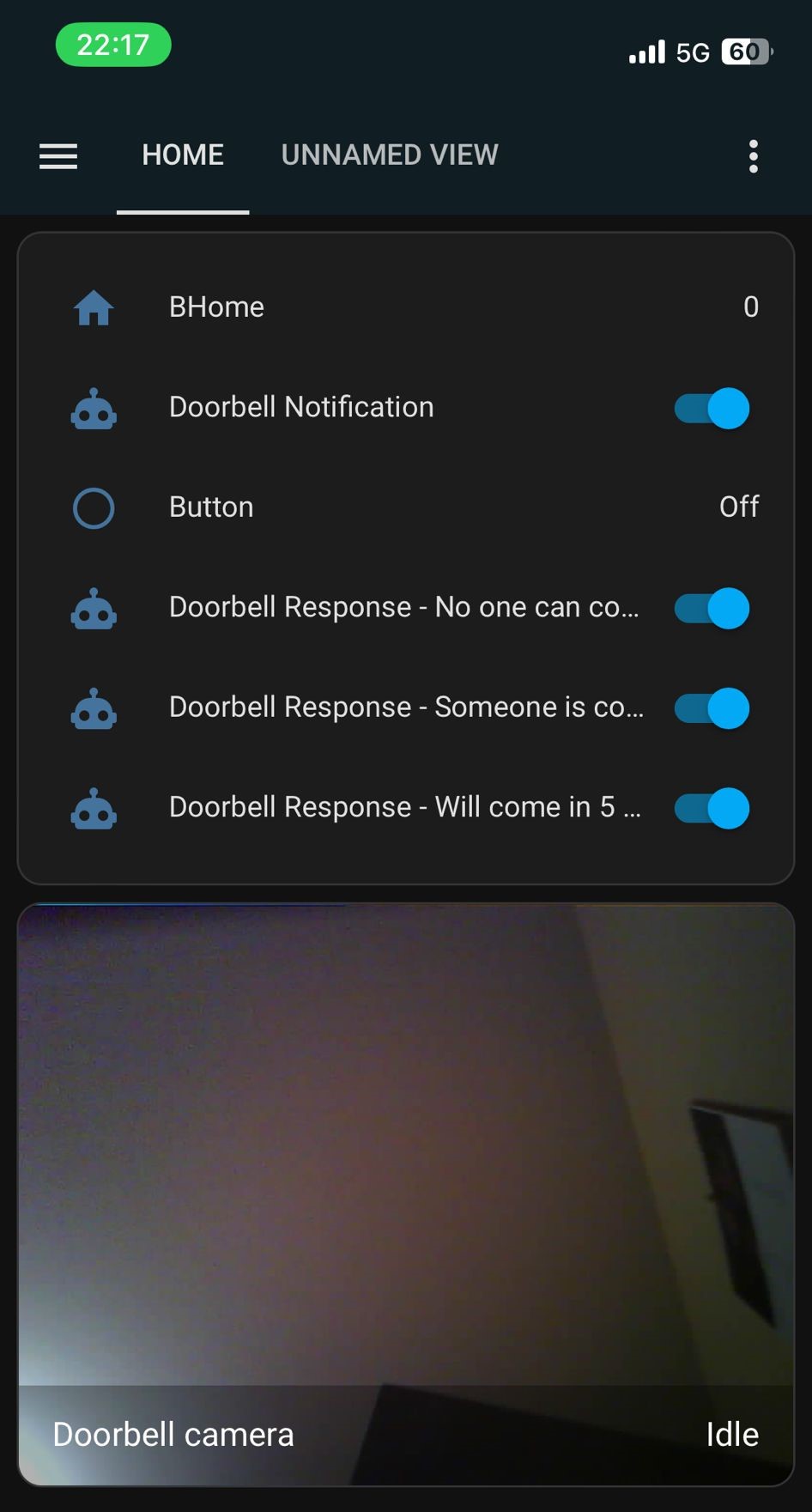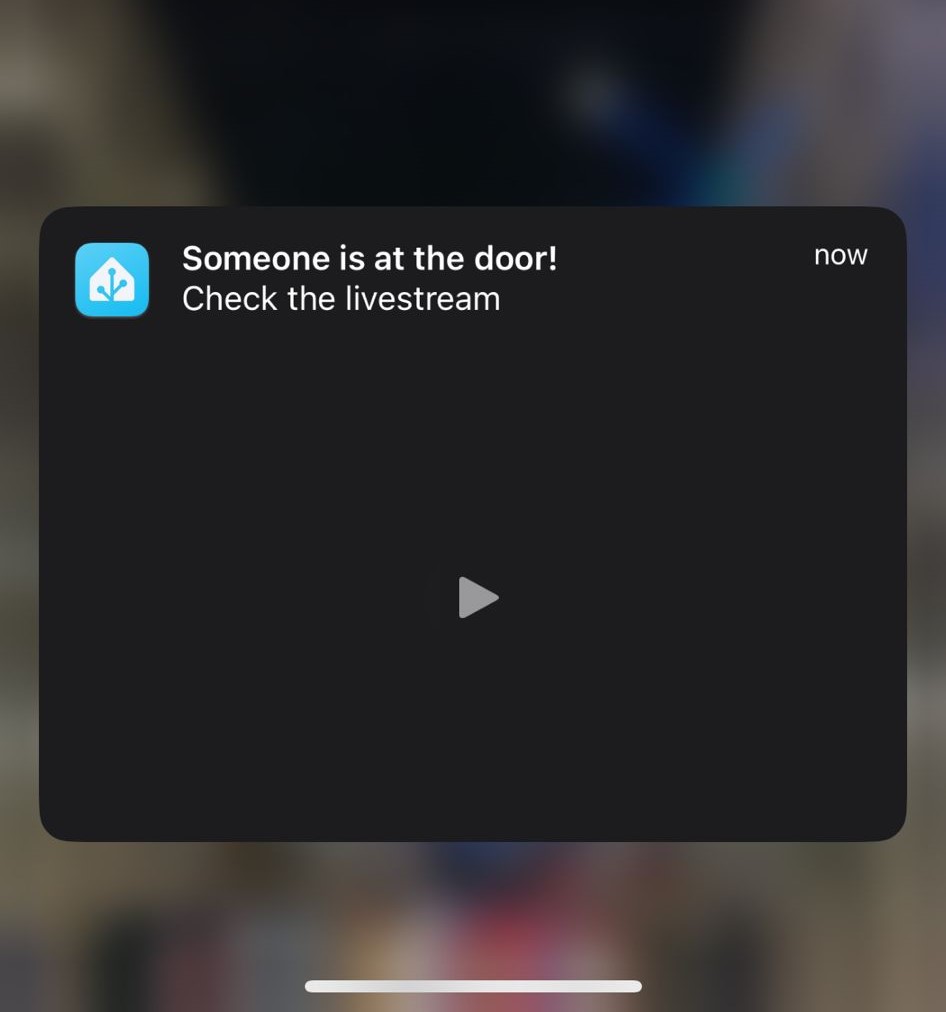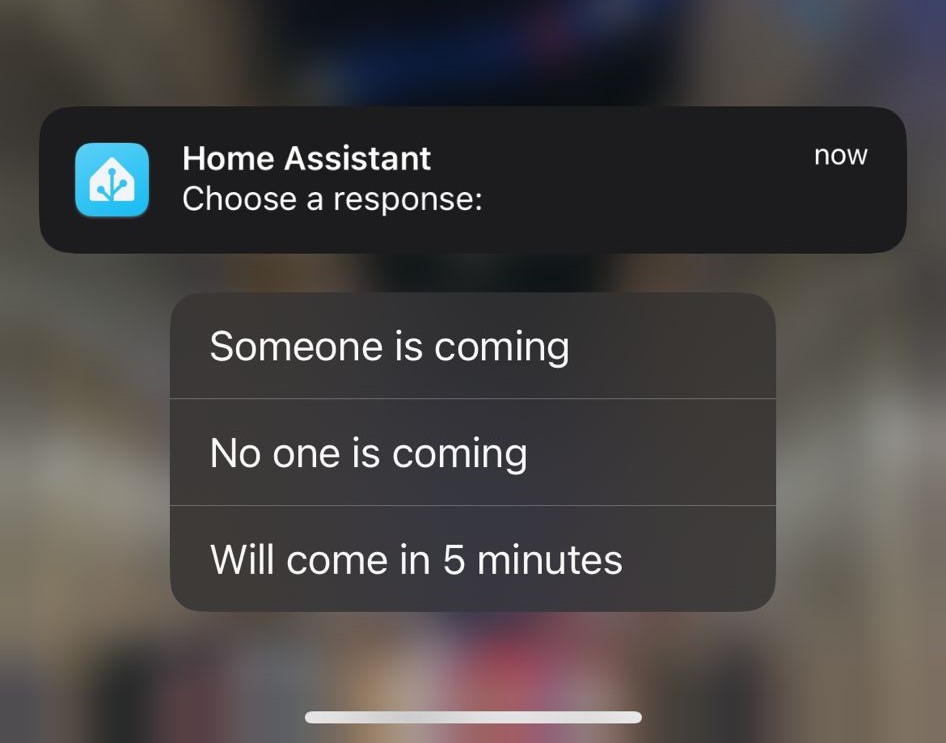Table of Contents
Smart Doorbell
- Author: Joita Anca-Stefania
- E-mail: anca_stefania.joita@stud.etti.upb.ro
- Master: ACES
- Source code, demo and PPT:
Overview
The motivation of this project is to implement a device that improves an usual doorbell.
When a visitor at the door presses the doorbell button, the device will send a notification the owner's phone with a link to the video streaming page where the owner can see the person at the door from anywhere in the world.
The owner can choose to answer the visitor with a few pre-recorded voice responses which are played through the doorbell, such as “Someone is coming at the door”, “No one can come at the door”, “Someone is coming to the door in 5 minutes”.
For the hardware part, an ESP32-CAM module is used for sending the live video stream. For transmitting the pre-recorded responses, I will use a DF-Player mini with a microSD card and a speaker.
The doorbell is controlled through Home Assistant, along with ESPHome.
Hardware description and implementation
For creating the doorbell, I used the following components:
- ESP32-CAM - module that integrates Wi-Fi and Bluetooth
- OV2640 Camera - supports up to 15 fps of video in UXGA(1632×1232) resolution
- DFPlayer Mini and microSD Card - supports MP3, WAV and WMA files
- USB to TTL RS232 Converter UART CH340 - used to upload the flash code to ESP32-CAM module
- Speaker
- Push button
- Green LED
- Resistor - 470 Ω
Software description and implementation
In order for the Doorbell to work as expected, the software configuration created is shown in the figure below:
- Home Assistant - Open-source platform used for automating the application by controlling it remotely through the phone application
- ESPHome - Open-source platform used for creating the firmware of the application and automating the entire behaviour of the Smart Doorbell
- WSL2 - Hyper-V virtual machine for configuring the Home Assistant Core
Home Assistant
I successfully configured Home Assistant with Nabu Casa Cloud, ensuring accessibility and control of the Smart Doorbell from the web browser and mobile phone as well. In this project, Home Assistant is used for receiving the notification with the live camera stream whenever someone presses the doorbell and to answer the doorbell with the desired response.
Automations
The automations shown in the image contribute to the proper functionality of the device:
- Doorbell Notification - When a visitor presses the doorbell button, the LED turns on, a ding-dong sound will be played on the DFPlayer and the owner will receive two notifications:
- Firstly, a notification that someone is at the door, with a camera live stream.
- After 5 seconds, another notification is sent, where the owner can choose to answer the door in three different ways, by just pressing the button:
- No one is coming to the door
- Someone is coming to the door
- Will come to the door in 5 minutes
handle_doorbell_press:
sequence:
- service: esphome.doorbell_dfplayer_play
data:
file: 4
- service: esphome.doorbell_switch_turn_on
- service: notify.notify
data:
message: "Check the livestream"
title: "Someone is at the door!"
data:
entity_id: camera.doorbell_camera
clickAction: "lovelace/camera-view"
- delay: '00:00:05'
- service: notify.mobile_app_Stefania
data:
message: "Choose a response:"
data:
actions:
- action: 'someone_is_coming'
title: 'Someone is coming'
- action: 'no_one_can_come'
title: 'No one is coming'
- action: 'will_come_in_5_minutes'
title: 'Will come in 5 minutes
- Doorbell Response - No one can come, Someone is coming, Will come in 5 minutes
- When the owner chooses a response, the action is sent to the doorbell and the corresponding pre-recorded voice respone is played, letting the visitor know the answer easily.
play_someone_is_coming:
sequence:
- service: esphome.doorbell_dfplayer_play
data:
file: 3
- delay: '00:00:05'
- service: esphome.doorbell_switch_turn_off
play_no_one_can_come:
sequence:
- service: esphome.doorbell_dfplayer_play
data:
file: 1
- delay: '00:00:05'
- service: esphome.doorbell_switch_turn_off
play_will_come_in_5_minutes:
sequence:
- service: esphome.doorbell_dfplayer_play
data:
file: 2
- delay: '00:00:05'
- service: esphome.doorbell_switch_turn_off
ESPHome
In the ESPHome platform I configured the firmware that connects Home Assistant to the ESP32-CAM board. I defined the components connected to the ESP32-CAM board: LED, push button, DFPlayer and OV2640 camera. Also, the communication with Home Assistant is implemented through the api services component of ESPHome. Here I defined the service of playing the audio responses through DFPlayer and the LED light control.
api:
services:
- service: dfplayer_play
variables:
file: int
then:
- dfplayer.play: !lambda 'return file;'
- service: dfplayer_play_loop
variables:
file: int
loop_: bool
then:
- dfplayer.play:
file: !lambda 'return file;'
loop: !lambda 'return loop_;'
- service: dfplayer_set_volume
variables:
volume: int
then:
- dfplayer.set_volume: !lambda 'return volume;'
- service: dfplayer_stop
then:
- dfplayer.stop
- service: switch_turn_off
then:
- switch.turn_off: ledlight
- service: switch_turn_on
then:
- switch.turn_on: ledlight
Challenges
For me, the whole project creation was a journey. I had planned other way of implementation, using MQTT, but that didn't go as expected, so I used in the end ESPHome platform.
One major challenge was connecting the Home Assistant to the device. i spent a lot of time on this, trying to connect through MQTT and then through ESPHome, but in the end everything is set.
Another significant challenge was to define the hardware part. I ordered most of the components all at once but then every few days I was realising I needed other component. I successfully completed the hardware part in time.
Conclusion
The project aims to enhance a traditional doorbell by integrating smart features using ESP32-CAM and DF-Player Mini modules.
The Smart doorbell is a very useful device and easy to use both for the visitor and for the owner of it, providing an innovative way of communication in the event that no one is home or the owner is busy.
The entire system is orchestrated through Home Assistant and ESPHome, offering a convenient and secure solution for doorbell interaction from anywhere in the world.
Bibliography
- ESPHome Wiki
- Home Assistant Documentation
- Video Doorbell
